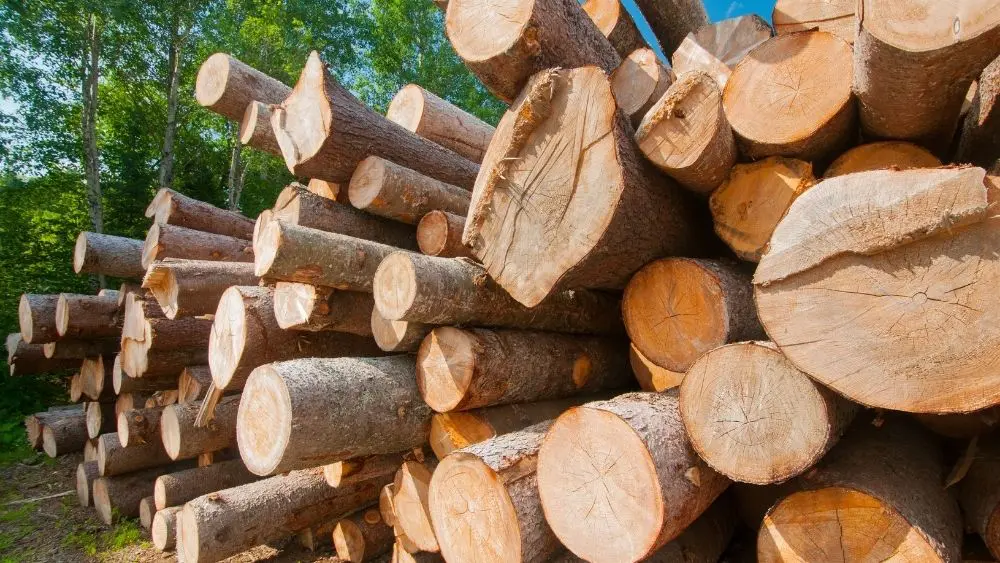
You may have seen the headlines: “Lumber Prices At All-Time High,” “Home Costs Soar As Lumber Prices Skyrocket.” While true – lumber prices rose 208 percent in 2020 – it’s not the huge home-buying barrier the headlines make it out to be.
The Ebb and Flow of Lumber Prices
Lumber prices have peaked and dipped before, rising in 2017 and 2018, then dropping back down in 2019. Then the “perfect storm” of 2020 hit with both demand and supply issues, says Robert Dietz, chief economist of the National Association of Home Builders (NAHB).
“We predicted about a 4 percent growth rate in single-family home construction in 2020, but it went up 12 percent,” says Dietz. “The demand for lumber shot up along with demand for new single-family homes and a surge in remodeling projects. We also saw the shift to people wanting larger homes, which meant demand was even higher.
“The pandemic caused global supply disruption for everything, including the literal nuts and bolts of home construction,” says Dietz.
However, there is also an insufficient domestic supply of lumber, he says. Mills cut production when the pandemic and the economic shutdown hit, anticipating a long recession rather than a quick uptick in demand. Even with demand high, many lumber mills continue to run with fewer workers due to COVID-19 safety requirements.
But there’s no need for home buyers to consider resale over new. Home builders are addressing the issues in several ways. And even when the initial cost of a new-construction home is higher than buying an existing one, you still can’t beat the long-term cost savings of a newly-built home.
How Builders are Handling High Lumber Prices
Approximately 90 percent of single-family homes are wood-framed, Dietz says.
A recent NAHB survey of builders found that they are taking several approaches to rising lumber prices. About half (47 percent) of builders are including escalation clauses in sales contracts that would cover increased costs due to lumber prices. About one-third (29 percent) are pre-ordering lumber when prices dip to avoid buying it when prices spike.
Other builders are choosing to delay building or sales when lumber prices spike, or to pause construction after framing to wait for lower prices.
“The hope is that by 2022, some of the supply side issues will be worked out with more sawmill capacity in the U.S. and a new agreement with Canada (from which the U.S. gets about a third of its lumber),” says Dietz. “The future markets anticipate lumber prices to stay high through 2021.”
But in the meantime, builders are using the opportunity to explore new options.
“High lumber prices offer an opportunity in the coming years for builders to build differently and experiment with things like 3D printing, which so far is effective typically only for one-level homes,” says Dietz.
The Cost Advantages of Newly Built Homes
Affordability is often a major concern for homebuyers. In recent years, low mortgage rates have kept homes in the affordable range for families, including first-time buyers, despite rising prices.
First-time buyers often look for entry-level affordable homes, which is why they tend to buy existing homes. However, the price gap between newly built and existing homes has narrowed so that purchase costs are virtually the same. In March 2021, the median sales price of a newly built home and that of an existing home differed by less than $2,000, according to Census Bureau data and the National Association of Realtors.
Despite the increase in the cost of materials, lots and labor, the price point and appreciation for the benefits of newly built homes brought more first-time buyers into the new-home market in 2020. In addition, Dietz says, millennials, who make up most of the first-time buyer market, are more willing to purchase a home on a smaller lot or a townhouse. Both of those options typically lower the cost of the home.
New-home owners enjoy several advantages over resale homes. There’s the peace of mind of knowing no one has ever lived in the home (a point that appeals to safety-conscious buyers in the midst of a pandemic). There’s also the joy of designing the exact home you want, rather than making concessions for existing homes that are almost perfect.
But perhaps the primary reason for the rising demand for new homes is that they are less costly to operate than an existing one.
For example, homebuyers are advised to set aside at least 1 percent of a resale home’s value annually for repairs and maintenance – so, for instance, $3,300 on a $330,000 home. Newly built homes rarely require repairs or extensive maintenance in the first several years. Builders typically include warranties of one to two years on many systems, materials and appliances, along with a 10-year warranty on structural issues. Unlike with an existing home, any issues found on a home inspection are the builder’s responsibility.
New homes also are built to the highest standards for energy efficiency and water conservation, which means your utility bills are likely to be lower than they would be in a similarly-sized resale home. Finally, if and when you eventually decide to sell your home, your resale value should be higher because you’ll be listing a 10-year-old property instead of one that’s 20 or 30 years out-of-date.
So, while higher lumber prices do have an impact on new home construction, the long-term value of newly built homes can offset any short-term price bump.

Michele Lerner is an award-winning freelance writer, editor and author who has been writing about real estate, personal finance and business topics for more than two decades.
 Master Planned Communities Near Tucson, Arizona
Master Planned Communities Near Tucson, Arizona